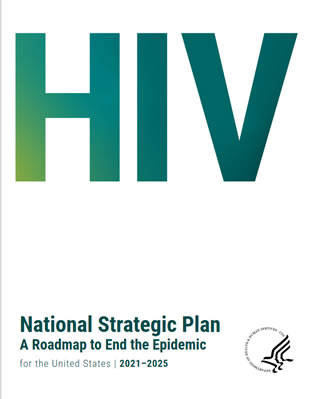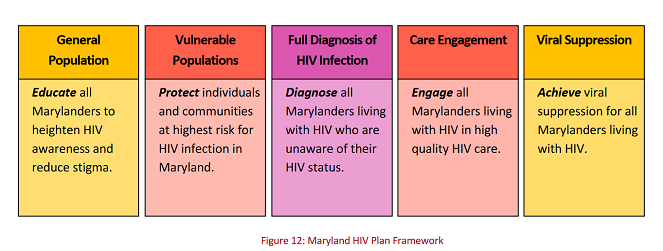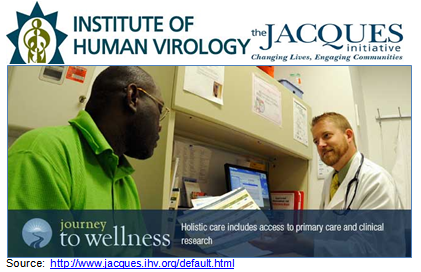Online Course
NRSG 780 - Health Promotion and Population Health
Module 11: Infectious Diseases
Population-based Initiatives to Reduce the Burden of HIV/AIDs
National

Source: https://files.hiv.gov/s3fs-public/HIV-National-Strategic-Plan-2021-2025.pdf
The HIV National Strategic Plan is the country's comprehensive coordinated HIV/AIDs roadmap for ending the HIV epidemic in the US and reducing the number of new infections by 90% by 2030. It is the nation’s third consecutive five-year plan and was developed based on public input and ideas from individuals living with HIV as well as other stakeholders and interested parties
The HIV Plan focuses on four goals and targeted strategies:
- Prevent new HIV infections
- Increase awareness of HIV
- Increase knowledge of HIV status
- Expand and improve implementation of effective prevention interventions, including treatment as prevention, PrEP, PEP, and SSPs, and developing new options
- Increase the capacity of health care delivery systems, public health, and the health workforce to prevent and diagnose HIV
- Improve HIV-related health outcomes of people with HIV
- Link people to care immediately after diagnosis and provide low-barrier access to HIV treatment
- Identify, engage, or reengage people with HIV who are not in care or not virally surpressed
- Increase retention in care and adherence to HIV treatment to achieve and maintain long-term viral surpression
- Increase the capacity of health care delivery systems, public health, and the health workforce to serve people with HIV
- Reduce HIV-related disparities and health inequities
- Reduce HIV-related stigma and discrimination
- Reduce disparities in new HIV infections, in knowledge of status, and along the health care continuum
- Engage, employ, and provide public leadership opportunities at all levels for people with or at risk for HIV
- Address social determinants of health and co-occurring conditions that exacerbate HIV-related disparities
- Achieve integrated and coordinated efforts that address the HIV epidemic among all partners and stakeholders
- Integrate programs to address the syndemic of HIV, sexually transmitted infections (STIs), viral hepatitis, and substance use and mental health disorders
- Increase coordination of HIV programs across all levels of government and with faith-based and community-based organizations, the private sector, academic partners, and the community
- Enhance the quality, accessibility, sharing, and use of data, including HIV prevention and care continuum and social determinants of health data
- Identify, evaluate, and scale up best practices including through translational, implementation, and communication science research
- Improve mechanisms to measure, monitor, evaluate, report, and disseminate progress toward achieving organizational, local, and national goals
For additional information, review the National HIV Strategic Plan at https://files.hiv.gov/s3fs-public/HIV-National-Strategic-Plan-2021-2025.pdf
Statewide
The Maryland Department of Health Centers for HIV Prevention and Health Services focus on:
- reducing the transmission of HIV,
- helping the nearly 32,000 Marylanders living with HIV/AIDs live longer and healthier lives through the development, and
- implementation of comprehensive, compassionate and quality services for both prevention and care.
- For more information review the MDH website at https://health.maryland.gov/phpa/OIDPCS/CHP/pages/home.aspx
Its most recent Integrative HIV Plan 2018-2022: A Comprehensive, Coordinated Response to HIV for Baltimore and Maryland is based on the National HIV Strategy and serves as Maryland’s roadmap for the development of a comprehensive system of HIV care in the state.
The plan includes four goals:
- Reduce new infections
- Increase access to care and improve health outcomes for people living with HIV
- Reduce health disparities and inequities
- Achieve a more coordinated response
The plan expands Marylandís approach to the continuum of care to focus prevention efforts on vulnerable populations and awareness among the general population.

The expanded continuum is organized into five domains that serve as the framework for the plan and the activities to achieve the goals.

The Jacques Initiative: A Baltimore Exemplar Program
The JACQUES Initiative (JI) program of the University of Maryland Institute of Human Virology is a holistic care delivery model that provides long-term treatment success for urban populations infected with HIV. Its goal is to decrease the morbidity and mortality associated with HIV through care delivery and providing early intervention services through activities including testing, outreach and linkage to care. The JI focuses on providing a “safe place” for individuals living with HIV through delivered services and providing access to research for all through the Journey to Wellness. There are five steps in the journey—engage, prepare, treat, support and develop.

Watch these two videos PTF Testing and LTC Video and Living Proof on the impact of this model on patient care.
The JI’s Preparing the Future (PTF) model program incorporates health, psychosocial and legal resources that facilitate HIV testing and linkages to care more routine and normalized. A central component of PTF brings together graduate students into teams from the University's dentistry, law, medicine, nursing, pharmacy, and social work schools to address the goals of National HIV/AIDS Strategy (NHAS), including identifying new infections of HIV and increasing access to care for people living with HIV. PTF has been identified by the White House Office of National AIDS Policy as a model for communities across the country.
This website is maintained by the University of Maryland School of Nursing (UMSON) Office of Learning Technologies. The UMSON logo and all other contents of this website are the sole property of UMSON and may not be used for any purpose without prior written consent. Links to other websites do not constitute or imply an endorsement of those sites, their content, or their products and services. Please send comments, corrections, and link improvements to nrsonline@umaryland.edu.